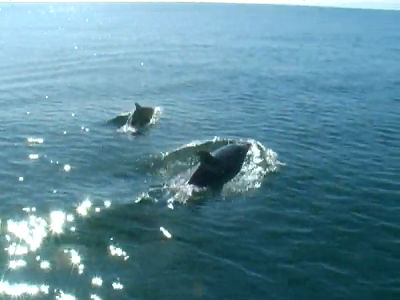A colorful pigeon thought to be extinct is discovered for the first time in 140 years, and a video showing it moving is also available

``
Large pigeon lost to science for 140 years rediscovered in Papua New Guinea
https://www.rewild.org/press/large-pigeon-lost-to-science-for-140-years-rediscovered-in-papua-new-guinea
Long-lost pigeon species 'rediscovered' in Papua New Guinea | CNN
https://edition.cnn.com/2022/11/19/world/black-naped-pheasant-pigeon-scn-trnd/index.html
Not seen since 1882, researchers spot the black-naped pheasant-pigeon
https://www.usatoday.com/story/news/world/2022/11/20/black-naped-pheasant-pigeon-researchers-spot/10745270002/
Black-naped Pheasant-pigeon is a type of gokurakubato that lives on Ferguson Island in the southeastern part of Papua New Guinea, and it is said that it mainly eats seeds and fallen fruits. However, the black-naped pigeon is facing habitat loss due to deforestation, and the Black-naped Pheasant-pigeon has been lost since sightings were last reported by scientists in 1882, making it likely extinct. was
However, in a field survey in 2019, Jordan Boersma, a postdoctoral researcher at the Cornell Institute of Ornithology, and his colleagues collected sightings of birds believed to be Black-naped Pheasant-pigeons from locals. Since this identified areas where Black-naped Pheasant-pigeon may inhabit, the joint research team of the Cornell Institute of Ornithology, the American Bird Conservation Society , and the Papua New Guinea National Museum will start from September 2022 for one month. We conducted a field survey on Ferguson Island over the years.
The research team installed 12 cameras on the slopes of Mt. Kilkerran, the highest peak on Ferguson Island, and eight cameras at points where local hunters reported seeing Gokurakubato in the past. As a result, a camera installed on a steep ridge at an altitude of 1,000m, where local hunter Augustin Gregory testified that he had seen a bird believed to be a Black-naped Pheasant-pigeon and heard a distinctive call, the researchers discovered that the island was Two days before I left, I managed to photograph a Black-naped Pheasant-pigeon.
The appearance of the photographed Black-naped Pheasant-pigeon can be seen in the embedded video below.
First Video Ever of the Black-naped Pheasant-Pigeon-YouTube
Right in front of the camera you can see the colorful body of a Black-naped Pheasant-pigeon. “It was at the end of our expedition that we finally found the Black-naped Pheasant-pigeon. I did' comment.

In addition to the spread tail feathers that are characteristic of the dove, we could also see a black neck and an orange beak.

Like the pigeons you see in Japan, they walk by shaking their heads back and forth, and their tail feathers sway up and down each time. Boersma said, ``When we recovered the camera we planted, we thought there was less than a 1% chance that we were filming a Black-naped Pheasant-pigeon. I was surprised to see a picture of this bird walking right by the camera.'

A video has also been released showing how the expedition team exploded with joy when they learned that they had successfully photographed a Black-naped Pheasant-pigeon called 'Auwo' in the local language.
Finding Auwo: the moment we found this lost species!-YouTube
Conservation scientist John Mittermeier, co-leader of the expedition team, said: ``After a month of searching, when I saw the first pictures of the Black-naped Pheasant-pigeon, it felt like I had found a unicorn. It was the dream moment of a lifetime for conservationists and birdwatchers.'
'This rediscovery is an amazing glimmer of hope for other birds that have been missing for more than half a century,' said Christina Biggs, extinct species search manager for the conservation group Re:wild. He suggested that other endangered birds may be surviving elsewhere.
Related Posts:







